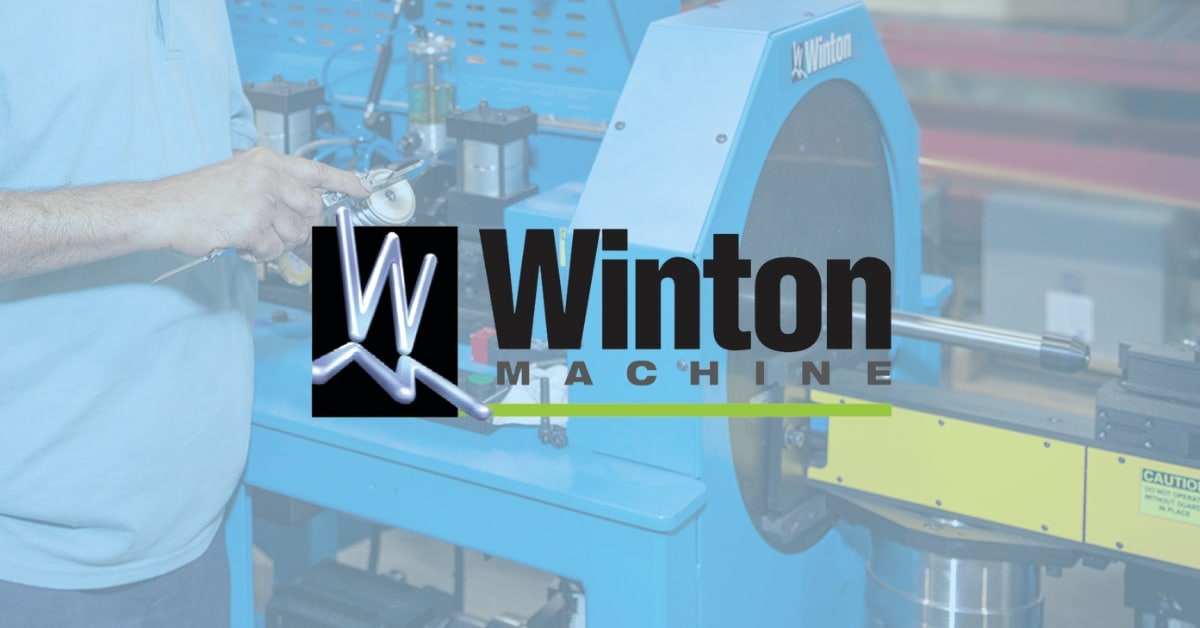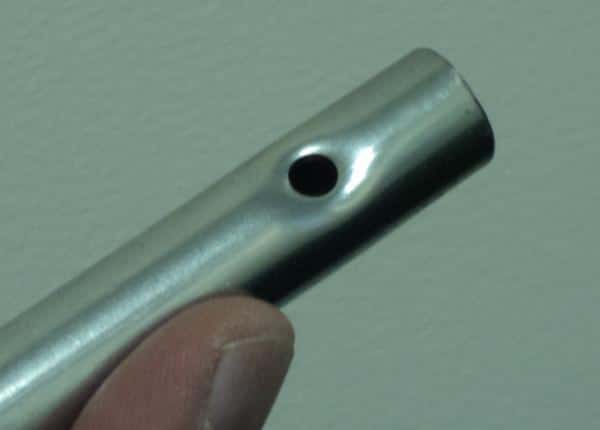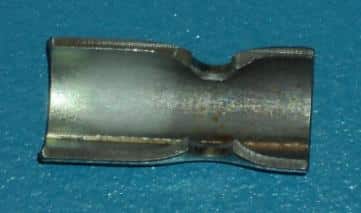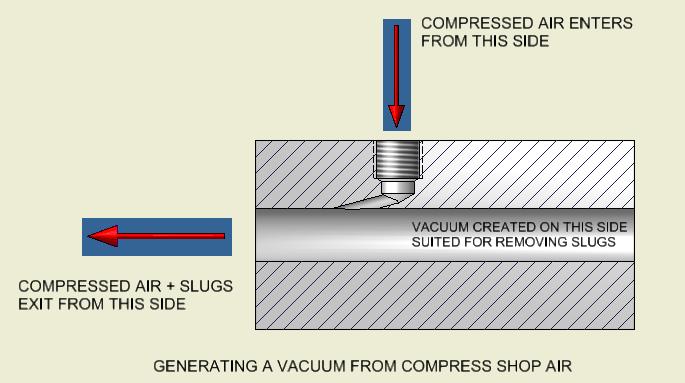Getting The Slug To Exit
Punching features in a tube perpendicular to the center axis of the tube is an everyday event worldwide. Whether you are punching with or without a mandrel, there is most often an unwanted piece of metal (the slug) to contend with. The slug usually takes the shape of the male punch that is forced thru the wall of the tube. When it comes to removing the slug from inside the tube, there are several options… and as you will see not all options are equal.
Punching Without a Mandrel
When there is no mandrel to support the structure of the cross section, the only means of resistance to punching is left to the strength of the cross section itself. Once the combination of the wall thickness/outside diameter/and material allow for the punch to shear thru the wall thickness itself, a slug is produced and a dimpled tube remains. Figure 1 shows a cross section of two holes punched without a mandrel. Notice how the material surrounding the holes flows to the inside. Being that there is no mandrel involved, the slug occasionally has a tendency to hang; not too different from the hanging chads in the 2000 presidential election.
In the case of a round punch, the pros and cons over how to grind the face of the punch can take on many forms. Grinding it flat (square) seems to work fine with the exception of the random hanging slug. The lack of a mandrel can introduce an inconsistency in how the slug departs (shears) from the base metal. In the event the end user doesn’t want the slug hanging by a thread, a secondary operation to dislodge the slug is often performed. This usually involves a pole driver device to dislodge the slugs. Trying to automate the process of physically removing a slug from the inside of a tube can be tricky due to the dimple like feature on the protruding towards the inside of the tube.
Punching With a Mandrel
Punching with a mandrel may seem like it costs more however the process of removing the slugs at time of punching can actually reduce the effort required to remove the slugs. First of all, a well-designed mandrel doesn’t permit a slug to hang onto its former surrounding material. The mandrel provides for a more positive shearing action thru preventing the slug from hanging. Secondly, once the slug is in the mandrel, a vacuum can be used (if gravity dictates) to remove the slug from the inside of the tube. Quite often the vacuum can be generated from compressed air; see Figure 2 below.
Of course mechanical devices can be employed to remove a slug from inside a mandrel. A mechanical device used with a mandrel is more convenient to automate because the inside diameter of the tube is not nearly as deformed as it is when punching without a mandrel.
Lube It Up?
To keep the punches punching longer, lube is often introduced. However, lube applied at the wrong viscosity can cause the slugs to gum up and thus hang around too long. This is where a light mist of lube can balance out the tool life with the ease of removing the slugs. Another factor interacting with the lube and the slugs is the surface finish of the exit tube. Something smooth goes a long way in getting the slugs to exit in a timely fashion.

George Winton, P.E. designs and builds CNC tube fabrication equipment for Winton Machine in Suwanee, GA. He can be reached at gwinton@wintonmachine.com or 888.321.1499.
About the Machines We Build
All of our semi-rigid coax and tube fabrication machines at Winton are designed, manufactured, and tested in-house. We have a large line of standard products as well as the ability to engineer the best solution for our customer’s needs. Our experienced sales staff makes sure that our customers can justify their capital equipment investment by offering a solution that is exactly what they need in order to manufacture their parts. Please contact us today to discuss your project.





